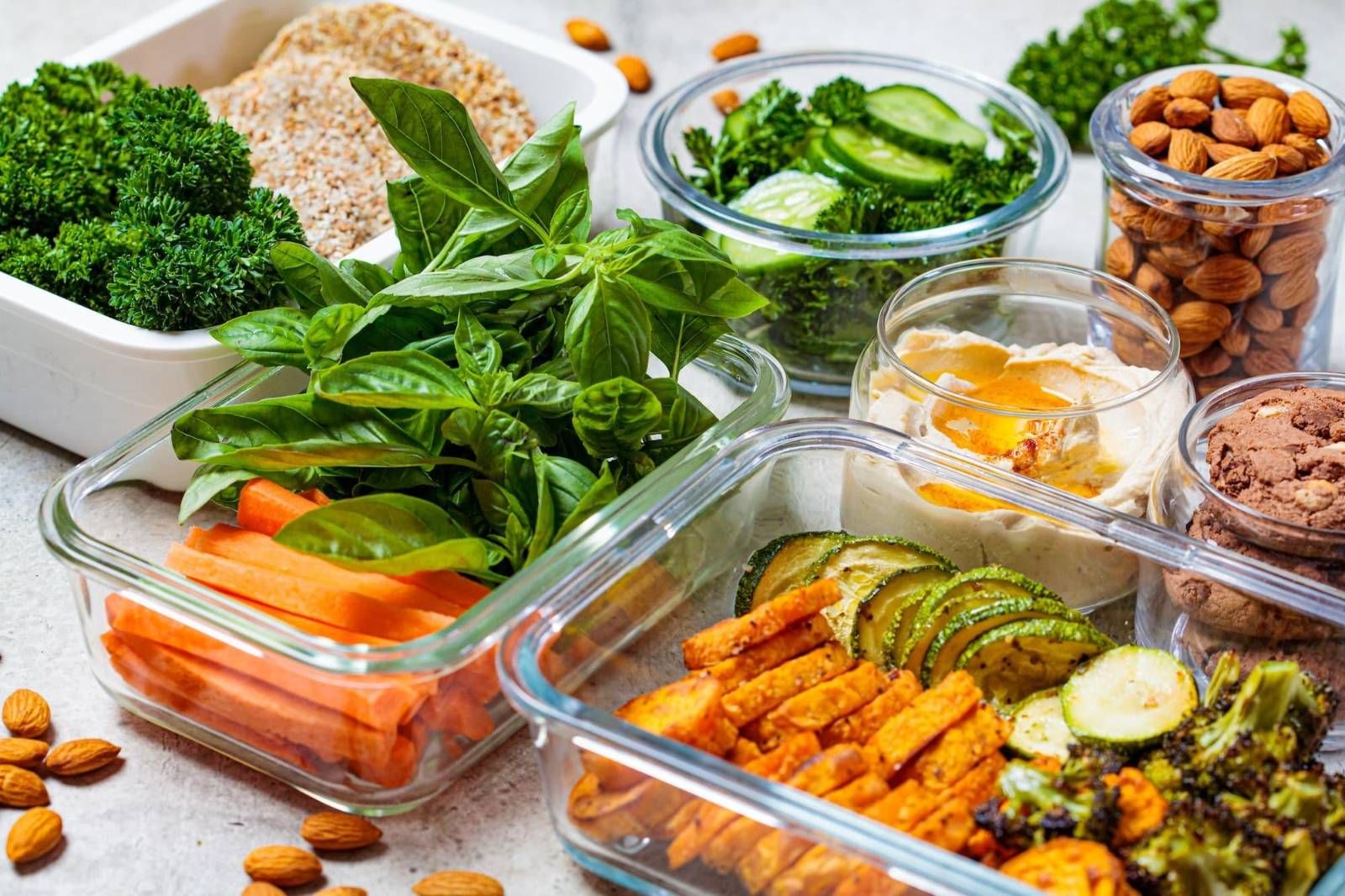

Healthy meal prep ideas can transform your active lifestyle, making it easier to maintain balanced nutrition while saving time and energy. Let’s learn more about this topic below with Eggy Car, exploring practical tips and delicious recipes to fuel your busy days.
Meal prepping has become increasingly popular among health-conscious individuals, especially those leading active lifestyles. The practice of preparing meals in advance offers numerous benefits that can significantly impact your overall well-being and fitness goals. By dedicating a few hours each week to meal prep, you can ensure that you always have nutritious options readily available, even during hectic schedules.
One of the primary advantages of meal prepping is the time saved during busy weekdays. Instead of spending precious minutes deciding what to eat or cooking from scratch after a long day, you can simply grab a pre-prepared meal and enjoy it. This convenience is particularly valuable for those with demanding work schedules or intense workout routines. Moreover, meal prepping allows for better portion control and helps prevent impulsive food choices that may derail your health goals.
Another significant benefit is the cost-effectiveness of meal prepping. By planning your meals in advance and buying ingredients in bulk, you can reduce food waste and save money on groceries. This approach also minimizes the temptation to order takeout or dine out frequently, which can be both expensive and less nutritious. With meal prep, you have full control over the ingredients and cooking methods, ensuring that your meals align with your dietary needs and preferences.
Meal prepping can also contribute to a more balanced and varied diet. When planning your meals for the week, you can intentionally include a diverse range of nutrients, ensuring that your body receives all the essential vitamins and minerals it needs. This is particularly important for those engaged in regular physical activities, as proper nutrition plays a crucial role in performance, recovery, and overall health.
To embark on your meal prep journey, it’s important to have the right tools and ingredients at your disposal. Investing in quality equipment can make the process more efficient and enjoyable. Start with a set of durable, microwave-safe containers in various sizes to store and reheat your prepared meals. Glass containers are an excellent choice as they are eco-friendly and don’t retain odors or stains.
A good set of sharp knives and cutting boards is essential for efficient food preparation. Consider having separate cutting boards for different food groups to prevent cross-contamination. A food processor or blender can be invaluable for creating sauces, dressings, and smoothies, while a slow cooker or instant pot can help you prepare large batches of soups, stews, and proteins with minimal effort.
When it comes to ingredients, focus on building a pantry with versatile staples that can be used in multiple recipes. Stock up on whole grains like quinoa, brown rice, and oats, which provide complex carbohydrates for sustained energy. Legumes such as lentils, chickpeas, and black beans are excellent sources of plant-based protein and fiber. Keep a variety of nuts and seeds on hand for healthy fats and added texture in your meals.
Fresh produce is a cornerstone of healthy meal prep. Choose a mix of colorful vegetables and fruits that can be easily incorporated into different dishes. Leafy greens, bell peppers, carrots, and broccoli are all excellent options that retain their texture well when prepped in advance. For proteins, lean meats like chicken breast, turkey, and fish are popular choices, while tofu and tempeh are great plant-based alternatives.
Don’t forget about herbs and spices to add flavor to your meals without relying on excess salt or sugar. A well-stocked spice rack can transform simple ingredients into exciting and diverse dishes. Lastly, consider incorporating some healthy convenience foods like pre-cooked grains, frozen vegetables, or canned beans to save time when needed.
Now that we’ve covered the basics, let’s explore some practical and tasty meal prep ideas that cater to an active lifestyle. These recipes are designed to provide a balance of nutrients, including lean proteins, complex carbohydrates, and healthy fats, to support your energy needs and recovery.
Starting your day with a nutritious breakfast is crucial for maintaining energy levels and supporting an active lifestyle. Overnight oats are a fantastic make-ahead option that can be customized to your taste preferences. Combine rolled oats with your choice of milk (dairy or plant-based), add a dollop of Greek yogurt for extra protein, and mix in fruits, nuts, and seeds. Prepare several jars at once for a week’s worth of quick and satisfying breakfasts.
Another great breakfast prep idea is to make a batch of egg muffins or frittatas. Whisk eggs with your favorite vegetables, cheese, and herbs, then bake in muffin tins or a large baking dish. These protein-packed bites can be easily reheated and paired with whole-grain toast or fresh fruit for a complete meal. For a twist on traditional eggs, try incorporating Eggy Car-inspired flavors like spinach and feta or sun-dried tomatoes and basil.
Smoothie packs are another time-saving breakfast option. Portion out ingredients for individual smoothies into freezer bags or containers. Include a mix of frozen fruits, leafy greens, and your preferred protein powder. When you’re ready to enjoy, simply empty the contents into a blender, add liquid, and blend for a quick and nutritious meal on the go.
For lunch and dinner meal prep, focus on creating versatile components that can be mixed and matched throughout the week. Start by preparing a large batch of lean protein, such as grilled chicken breast, baked salmon, or roasted tofu. These can be seasoned with different herbs and spices to prevent flavor fatigue. Portion the protein into individual containers, ready to be paired with various sides.
Roasted vegetables are an excellent addition to any meal prep plan. Choose a variety of colorful veggies like bell peppers, zucchini, sweet potatoes, and Brussels sprouts. Toss them with olive oil, salt, and your favorite seasonings, then roast in large batches. These can be added to salads, grain bowls, or served as a side dish throughout the week.
Grain bowls are a popular and customizable option for meal prep. Cook a large batch of quinoa, brown rice, or farro, which can serve as the base for multiple meals. Combine the grains with your prepped proteins, roasted vegetables, and a flavorful sauce or dressing. For added nutrition and texture, include toppings like avocado, nuts, or seeds just before eating.
Mason jar salads are another excellent option for those who prefer lighter meals. Layer ingredients in a jar with the dressing at the bottom, followed by sturdy vegetables, proteins, and greens on top. This method keeps the ingredients fresh and prevents the salad from becoming soggy. When ready to eat, simply shake the jar to distribute the dressing evenly.
For those following a plant-based diet or looking to incorporate more meatless meals, consider preparing a large batch of lentil or bean-based dishes. A hearty lentil soup or chili can be portioned into individual containers and frozen for future meals. These protein-rich options are not only nutritious but also budget-friendly and easy to prepare in large quantities.
To make the most of your meal prep efforts, it’s essential to develop a strategic approach. Start by planning your meals for the week ahead, taking into account your schedule, nutritional needs, and taste preferences. Create a detailed grocery list based on your meal plan to ensure you have all the necessary ingredients on hand.
Designate a specific day and time for meal prepping. Many people find that Sunday afternoons work well, as it allows them to prepare for the upcoming week. However, choose a time that fits best with your schedule and energy levels. Consider breaking up your meal prep into two sessions if preparing everything at once feels overwhelming.
When it comes to the actual preparation, focus on efficiency. Start with tasks that take the longest, such as roasting vegetables or cooking grains, while simultaneously preparing other components. Utilize different cooking methods to maximize your kitchen space and time. For example, you can have a pot of soup simmering on the stove while roasting chicken in the oven and assembling salads on the counter.